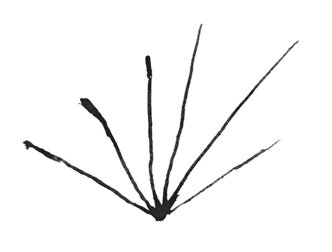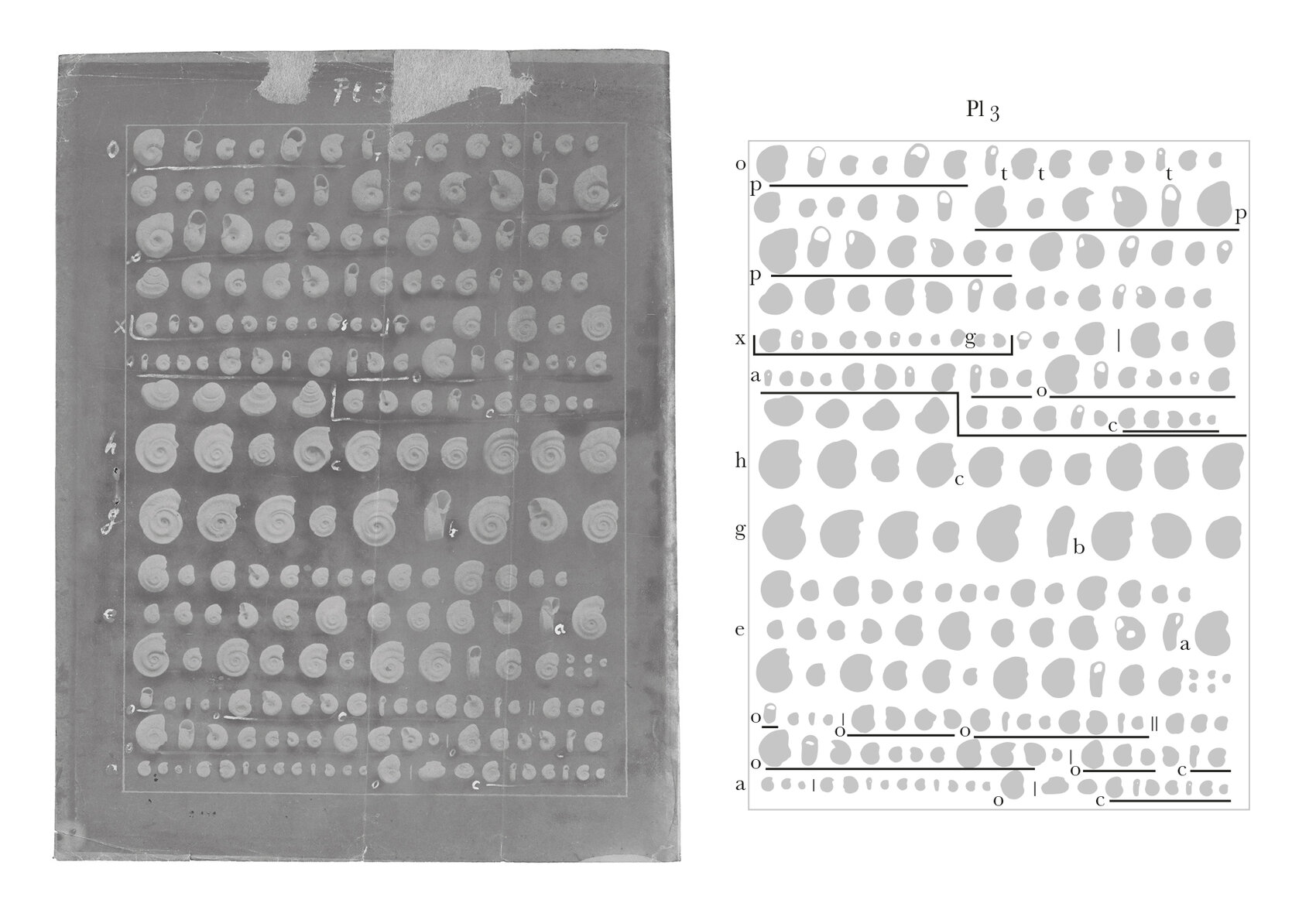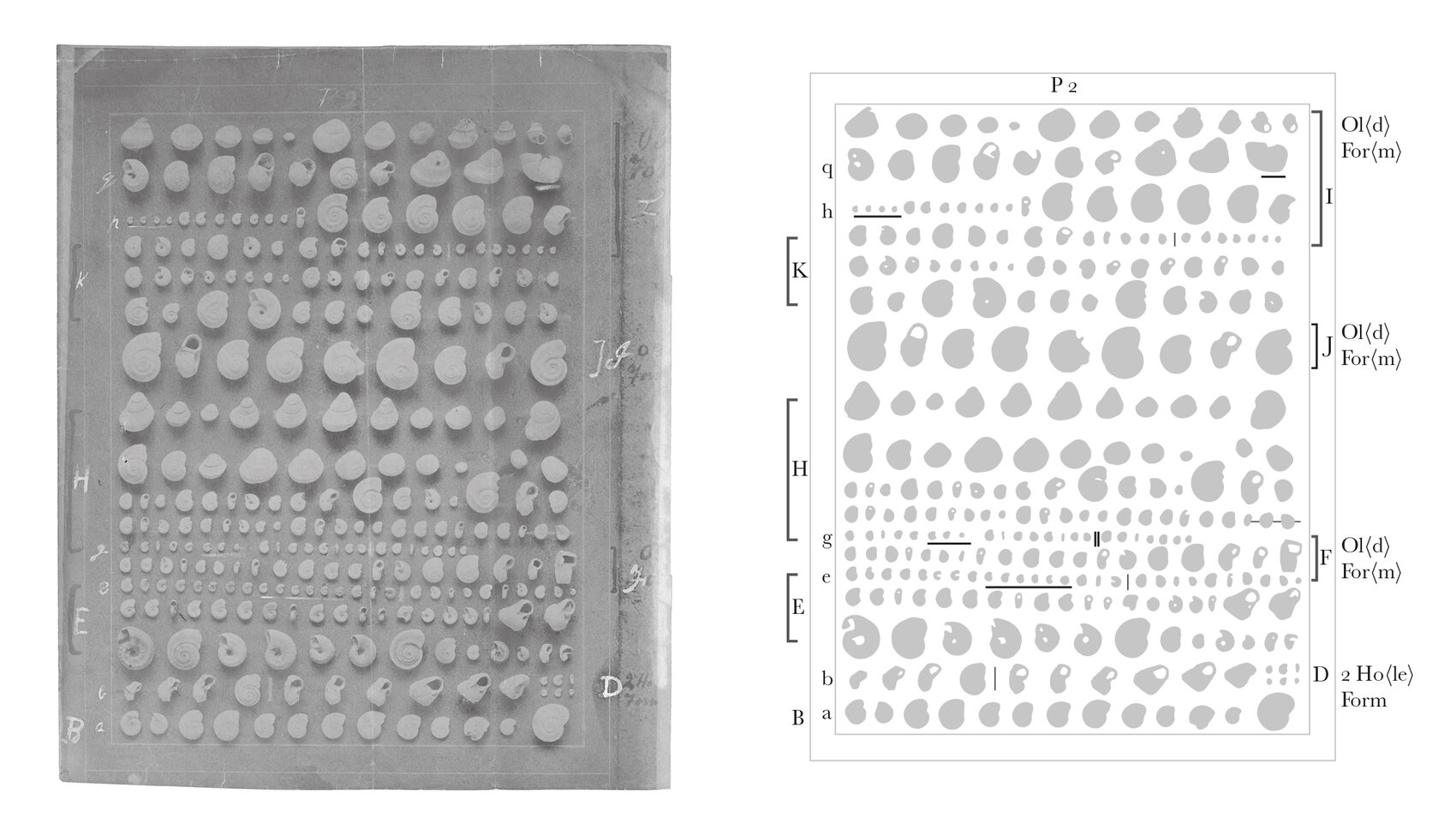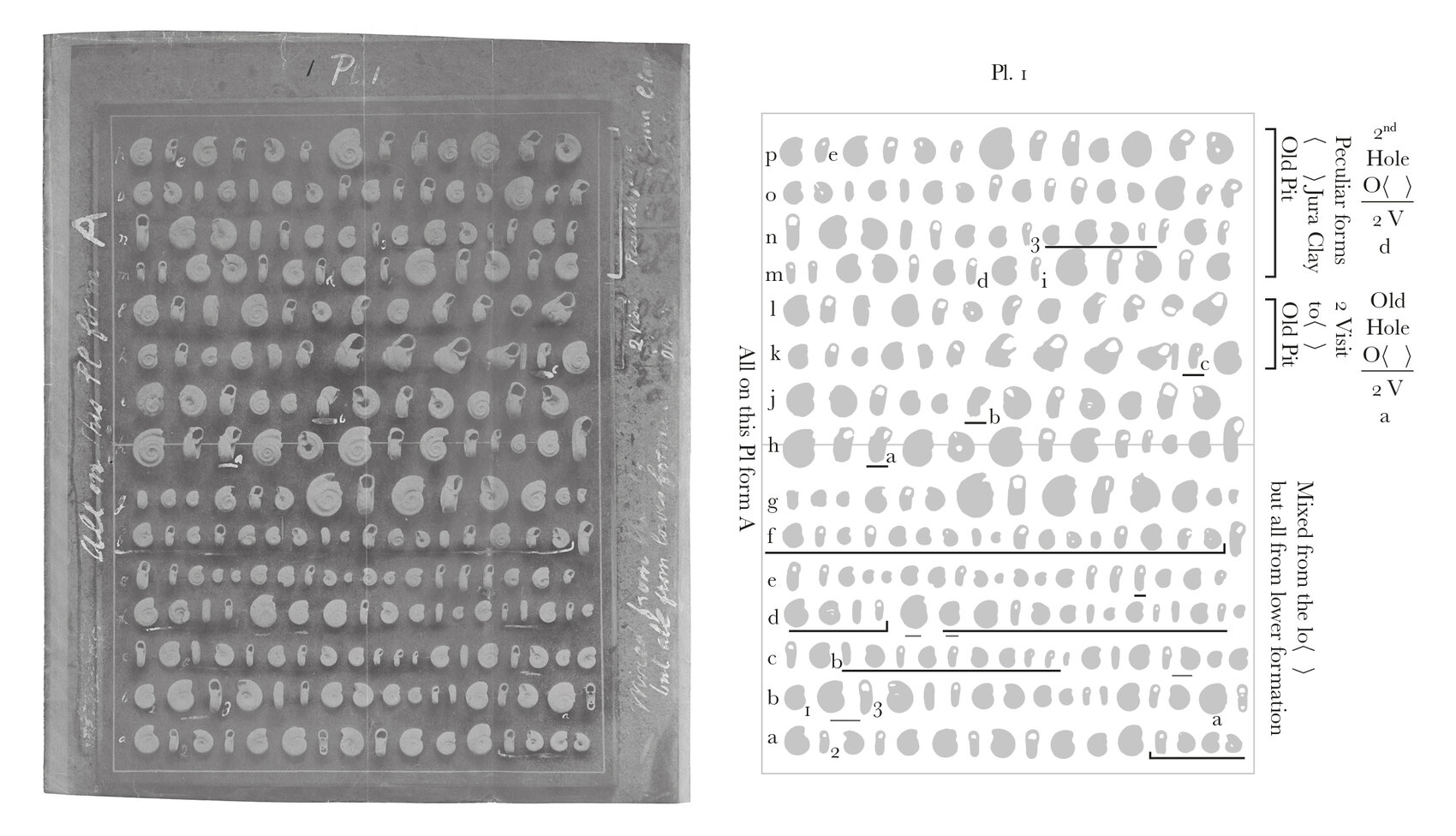From Alpheus Hyatt January 1877
Address Boston. Soc. Nat. History
January 1877
Dear Sir
I have to day a chance to write you and I feel just like taking advantage of it. It is one of my sick days when I am obliged to stay at home with a cold and nurse my ailments and I fear enjoy them, because at the same time I can study Steinheim Shells, or write as “par example”.1 If I had headed the letter as I felt I should have put the “Master” in place of “Sir” for we, after all are only your pupils, following out your methods of research and obtaining new things by their aid. I have been particularly struck by this fact lately in reading Weissmann2 and in my intercourse with scientific students. The old style of talk is dying out among us and it is curious to note that some of the young men hardly understand the real value of the work done by the old school of systematists and teleologists. But I do not mean to use up your time entirely with gossip I wish to tell you of the way in which the Steinheim work goes on, a matter of some interest to you I know. The inclosed copies of the three plates will show you something of what I am doing, but I hope they will not lead you to expect too much of me in the result, that would be a misfortune to be carefully guarded against.3
Some of the provisional results can be stated now, though subject to future emendations. I think the following will be found to hold criticism. First that the whole fauna in so far as the main series is concerned, that from Steinheimensis to Trochiformis, arose in a period preceding that of Sand Pits viz in the rocks on the outer rim of the Steinheim basin and those represented on the hill on Klosterberg in the centre.4 These rocks have been much neglected but I am pretty well satisfied, that there was a large formation, which has been mostly carried away by denudation and which contained the first Steinheim fauna. I have written to Sandberger & Fraas5 but have not stated this result. This was done in order to obtain certain facts with relation to the rocks and observations on specimens of the First Period as simple unbiassed statements. Unfortunately I cannot renew my visit to Steinheim and must leave the very kernel of the problemn for some else to enjoy. Steinheim is at once the most satisfying and the most disappointing of places. You will see by the Plates, which of course only represent selected specimens, and therefore only give a small number of the observable variations, that the material in the Sand Pits is practically inexhaustible simply as a study of variation-power in the species, but notwithstanding this the forms are mixed in inextricable confusion in the formations and the history of the period in which they had their rise is represented by a meagre band of fragmentary rock.6
Another experience is of some value. I strongly doubt whether it is possible to construct a classification in such a chaos, as is here presented, which will really give a picture of the real genesis of the different varieties. I am doing my “level” best in that direction now, but find that after tracing out a series from Steinheimensis/ aequiumbilicatus to any other form, that often very puzzling alternatives present themselves, and I am not absolutely sure that the line of genesis as I trace it is really the same as that by which Nature herself worked out the forms.7 One thing seems to begin to stand out from the muddle it is “aw a muddle” namely that a distinct species such as Pl. tenuis for example may arise, perhaps, I may say, probably does arise from several varieties of Pl. Steinheimensis at once or in such connection as to suggest the idea of simultaneity. For instance see Pl. 1st. fig, a, line b Pl. Steinheimensis and follow into line c, fig. b, “et seq.” Pl. tenuis; also begin fig 1 line m Pl. Stenh. and fig 1 line b Pl. tenuis/Stein and follow into Pl. tenuis fig 3 “et seq line n; also note fact that Pl. discoideus line f and g does not arise from the flattened Pl. tenuis but direct from the stouter forms of Pl. Steinheim on line a, last four specimens (probably.8
All the Pl. oxynotus and supremus forms and others of the smooth shells such as Pl crescens are traceable also to “Steinheimensis’ directly and not to “trochiformis” etc as Hilgendorf thought.9 See Pl. 3 upper 6 lines and the three first lines of the same Plate with exception of course of some carinated species which you can readily detect. c—“crescens” and transitions to Steinheimensis, o—“oxystomus” with same, s supremus with transitions to “oxystomus”. A curious parallelism is noticeable in the forms of the sub-series they all show a tendency to become turretted, see line X, Pl 3 a form of “oxystomus” especially fig 8 with a true trochiform aspect.10 I can prove that these did not arise from trochiformis in any accountable way, see the young which are on the same line and which are identical with full grown “oxystomus”. In fact there seems to be a number of series arising from Pl. Steinheimensis all of which tend to produce forms, which are similar, that is more or less like “trochiformis.
This tendency in each series to become trochiform is combined with a contrary, or rather opposed by a contrary tendency. Thus in every flattened species there are some forms with the mouths bent up against the spiral, as in fig. 3, line b, Pl. 1st., and fig. 2, line a, Pl. 1st. and the variations run in their most marked (but not all their forms) between this and the trochiform spiral, the former are rarer than the latter varieties and become steadily rarer as the line of supposed genesis is followed up, The latter on the contrary seem to grow stronger and more numerous as well as larger. I cannot refer to the former as reversions though I have not all the data I hope to have on this point.— So far as I can see however the probable ancestor of the whole group will be found in Sandberger’s Pl. levis an asymmetrical species, like the young of the sub-turretted forms of Pl. Steinheimensis.11 If this is so the forms described above as tending to reverse the spiral, or to be more or less æquiumbilicated, as they always are, are not reversions, but express direct tendencies to an opposite mode of growth than those expressed by the turretted forms. But let us suppose the opposite to be true and see how it would come out. Let us suppose that the æquiumbilicated form which is so common in the young of Steinheimensis and in some adults to be indicative of an ancestor with a similar form who lived in the earlier part of the first Steinheim period. Would the forms now living such as the “æquiumbilicatus”, line b, pl 1st, last figure, be reversions? Are they not too much like their ancestor from the young up to be anything but direct descendants? They also express in my mind arrest of development. Thus if they were the young of unsymmetrical forms of Pl. Steinheimensis, they differed from the parents in not changing their mode of growth at an early period from the symmetrical to the unsymmetrical but retained the former and with it the peculiar smoothness and rotundity of the young. There are some forms, but these are very rare which have appeared to me as truly reversionary. These are first symmetrical, then unsymmetrical and finaly tend to become symmetrical again. I put these things in this way because it will help me to know what you think about the matter. Cope and I would call the symmetrical forms, “retarded” forms and the turritted forms with their concurrent tendency to the formation of carinations and sulcations in the earlier and later stages of growth “accelerated” forms, in allusion to the fact, that the first pass through stages which occupy the entire shell but are, nevertheless only the morphological equivalents of the earlier or younger stages of the other varieties or individuals.12 It is a notable fact in this connection that very large forms of Pl. Steinheimensis are apt to have the characteristic sulcation of “tenuis” developed on the last part of the last whorl, see pl 1st., line h, last figure, while smaller forms do not have these marks except as a great rarity.
Another tendency in these different series must also be noticed. This is towards uncoiling, it occurs in all the series but more notably in some than in others. It may occur at any time in the life of an individual of the Pl. minutus series which becomes entirely uncoiled in it’s ultimate forms as traced by Hilgendorf.13 In other series it is to be looked for to occur anywhere in the species of the series but not anywhere in the life of the individual So far as the latter is concerned the uncoiling always takes place after the shell is well grown and under such circumstances as indicate that it is either caused by old age or by wounds or by diseases of some sort. Taking this into consideration, and the fact, that where the uncoiling appears in the young, that the species are very small though descended from Pl. Steinheimensis, it would appear as if all the parallel forms of this kind, which appear in the different series, were the direct product of unfavorable circumstances causing diseases in the individual or in the series.
This agrees beautifully with my Ammonite researches, much better, than if I had found, what I hoped to find when I went to Steinheim; that Pl. oxystomus and supremus, were the senile and dying forms of the whole “trochiform series according to the picture of Hilgendorf.14 Talking of this point reminds me, that I shall send another Ammonite paper on Stephanoceras very soon in which I hope you will see that I have made another step, though it be only a small one in comparison to those you are doubtless notified of almost daily.15 I had almost forgotten to add that you will see some of the normally uncoiled “numulus” forms on lines e & g pl. 2 and the abnormally uncoiled of the different series with some transition forms as follows. Pl 1st line h, fig a, line 1, fig b, line k, fig. c, Line m, fig d, line p, fig e; Pl. 2nd., line b, fig 1–3 and line q, last figure; Pl. 3, line e, fig. a, line g, fig b, line h, fic c, line o fig TT. A word or two more and my letter is finished. The first plate shows the forms found in the lowest formation in two separate holes, one of them was twice opened and explored so there are three divisions in the species figured one on line K—“III”—marking the limits of general series found in lowest formation in the Old Pit, The two last figures line k and all on line l show the confirmation of the presence of “trochiformis in the lowest formation obtained by a second exploration of the same hole, lines m–p show the special result of an exploration on the lowest level in the second hole dug in the Old Pit. Pl. 2 shows analysis of forms found in various strata of the Old Pit from formation “B” to form “L” the formations being in all cases marked off by “III” scratches and the figures must be followed from left to right. Pl. 3 shows in the specimens figured in the first three lines species of peculiar forms found in the New Pit in abundance and not found in the almost adjoining Old Pit. The remainder of the Plate gives the formations of the Cloister Pit on the So. side of the Cloisterberg from formation “K” to “M” as synchronized with those of the Old Pit and other Pits on the No. side of the hill. Hope to have a map and sections with these plates to illustrate the work in the various Pits. Prof. Henry heard a paper read by me before the National Academy and offered to consider it for publication in the Smithsonian Memoirs when ready.16 With this and another more interesting fact I will conclude, what I fear must have become a wearisome letter to you. I have found another Steinheim in New Brunswick. It is a bona fide story and I am going there next summer. The name is Lawlor’s Lake Near St John, and the shell true Valvata, but doing just the same outlandish things as the Planorbidæ of the Magnon lakes.17 I have a faint hope that I may find some of the species still living in the modern lake, which still occupies a portion of the valley anciently taken up by Lawlor’s Lake. The distorted shell are found in marl deposits on the borders of the modern lake. The geology is being now worked over by M Matthew of the Canadian Survey and I think we will be able to make a clean story from the start if the facts are as described.18 The forms begin with a perfectly flat, closely coiled round whorled Valvata, then become “trochiform” by degrees but not carinated and end by being wholly uncoiled like Pl. denudatus Hilg. The whole series however and there seems to be but one has no carinæ or sulcations, the whorls remaining round and smooth. If I am tiresome I hope you will forgive me for the sake of my good intentions, and because I cannot help pouring myself out to a man so ready to hear and help people as you have been to me and others.
Very sincerely and respectfully | Alpheus Hyatt
See Note on Plates.19
[Enclosure]
All th⟨e fig⟩ures are x 2 diameter and pho⟨tograph⟩ed from specimens mounted on ⟨pla⟩tes of slate. inside line is 3 x 4.
Note
My present view of the relations of these forms (or species whatever that word may mean) accords closely with your diagram in the Origin of Species ie fan shaped.20

The lines in this case representing the divergent series springing from Steinheimensis or it’s ancestral form “levis” land. These though divergent produce as I have shown certain parallel forms by the tendencies they respectively possess to become more and more trochiform and then to become more or less unwound either in isolated individuals or in series of forms. The tendency in each series besides the above is towards the development of carinations and sulcations causing as correllative features the whorls and mouths first to become square and then triangular. When the whorl first becomes squared it is observed in the largest of Pl. Steinheimensis. Then this square form and sulcation etc is found at variable periods in the individuals of tenuis/Steinheimensis and at last it becomes constant at a young stage in Pl. tenuis. This is a good illustration of what Cope and I call “acceleration” in development. The illustration of “retardation” I have already given.21 The unwinding is quite similar to the senility of the Ammonites and doubtless due to the same thing, the unfavorable action of physical causes producing exhaustion in the case of normal old age and diseases in other cases. I do not see yet so clearly as I might, where and how to bring in Nat. Selection. Among the Amm. as I have before written you I can account for the preservation of differences until they become constant in the race.22 Then they begin to be inherited at earlier periods in successive descendants and are carried out of the reach of Nat. Selection which appears then to act with greatest force in these descendants upon the new variations produced in the adults or later stages of the young. If it is not asking too much I should like to know whether Nat Selection can account for the tendency in each of these series to produce similar forms ie trochiform species out of an ancestor like Steinheimensis. I have said among the Ammonites that it seemed to me that it could not do so but was limited to the preservation and perpetuation or rather the establishment in each series of the differences of structure which distinguished one series from another.23 You will observe in this connection that the series from Stein. to supremus is distinct from the series from Stein. through “discoideus” to trochiformis and that the “minutus” series is very different from both of these.24
When I began this note on these plates I meant only to say a word, but I found that I must keep on even at the risk of asking more of Your time and patience than you can give to this matter. If so be kind enough to drop it where you desire to without apology. I am perhaps too anxious to make my paper thorough in view of the mischief which Hilgendorf’s unaccountable mistakes have caused.25 If my illustrations and explanations are not clear please throw the burden upon my shoulders and do not attempt to waste time in puzzling them out. If I understand it I ought to be able to make it clear, or ought to suffer the consequences until I can do so.



CD annotations
Footnotes
Bibliography
Correspondence: The correspondence of Charles Darwin. Edited by Frederick Burkhardt et al. 29 vols to date. Cambridge: Cambridge University Press. 1985–.
DCB: Dictionary of Canadian biography. Edited by George W. Brown et al. 13 vols. and index to first 12 vols. Toronto, Ontario: University of Toronto Press. 1966–94.
Expression: The expression of the emotions in man and animals. By Charles Darwin. London: John Murray. 1872.
Gould, Stephen Jay. 2002. The structure of evolutionary theory. Cambridge, Mass.; London: Belknap Press of Harvard University Press.
Hilgendorf, Franz. 1866. Ueber Planorbis multiformis im Steinheimer Süswasserkalk. Monatsberichte der Königlich Preussischen Akademie der Wissenschaften zu Berlin (1866): 474–504.
Hyatt, Alpheus. 1870. On reversions among the ammonites. [Read 5 October 1870.] Proceedings of the Boston Society of Natural History 14 (1870–1): 22–43.
Hyatt, Alpheus. 1876. Genetic relations of Stephanoceras. [Read 7 June 1876.] Proceedings of the Boston Society of Natural History 18 (1875–6): 360–400.
Hyatt, Alpheus. 1880. The genesis of the Tertiary species of Planorbis at Steinheim. Boston: Boston Society of Natural History.
Matthew, George Frederic. 1883. Lacustrine formation of Torryburn valley. Bulletin of the Natural History Society of New Brunswick 1 (2): 3–20.
Origin 6th ed.: The origin of species by means of natural selection, or the preservation of favoured races in the struggle for life. 6th edition, with additions and corrections. By Charles Darwin. London: John Murray. 1872.
Origin: On the origin of species by means of natural selection, or the preservation of favoured races in the struggle for life. By Charles Darwin. London: John Murray. 1859.
Prodger, Phillip. 2009. Darwin’s camera: art and photography in the theory of evolution. Oxford: Oxford University Press.
Rasser, Michael W. 2013. Darwin’s dilemma: the Steinheim snails’ point of view. Zoosystematics and Evolution 89: 13–20.
Sandberger, Fridolin. 1870–5. Die Land- und Süsswasser-Conchylien der Vorwelt. 1 vol., with atlas. Wiesbaden: C. W. Kreidel.
Summary
Reports on his work. Relationships of shells found at Steinheim; attempts to elucidate the genesis of different forms.
Letter details
- Letter no.
- DCP-LETT-10760
- From
- Alpheus Hyatt
- To
- Charles Robert Darwin
- Sent from
- Boston Society of Natural History
- Source of text
- DAR 166: 357, 359
- Physical description
- ALS 14pp †, encl 3pp
Please cite as
Darwin Correspondence Project, “Letter no. 10760,” accessed on 19 April 2024, https://www.darwinproject.ac.uk/letter/?docId=letters/DCP-LETT-10760.xml


